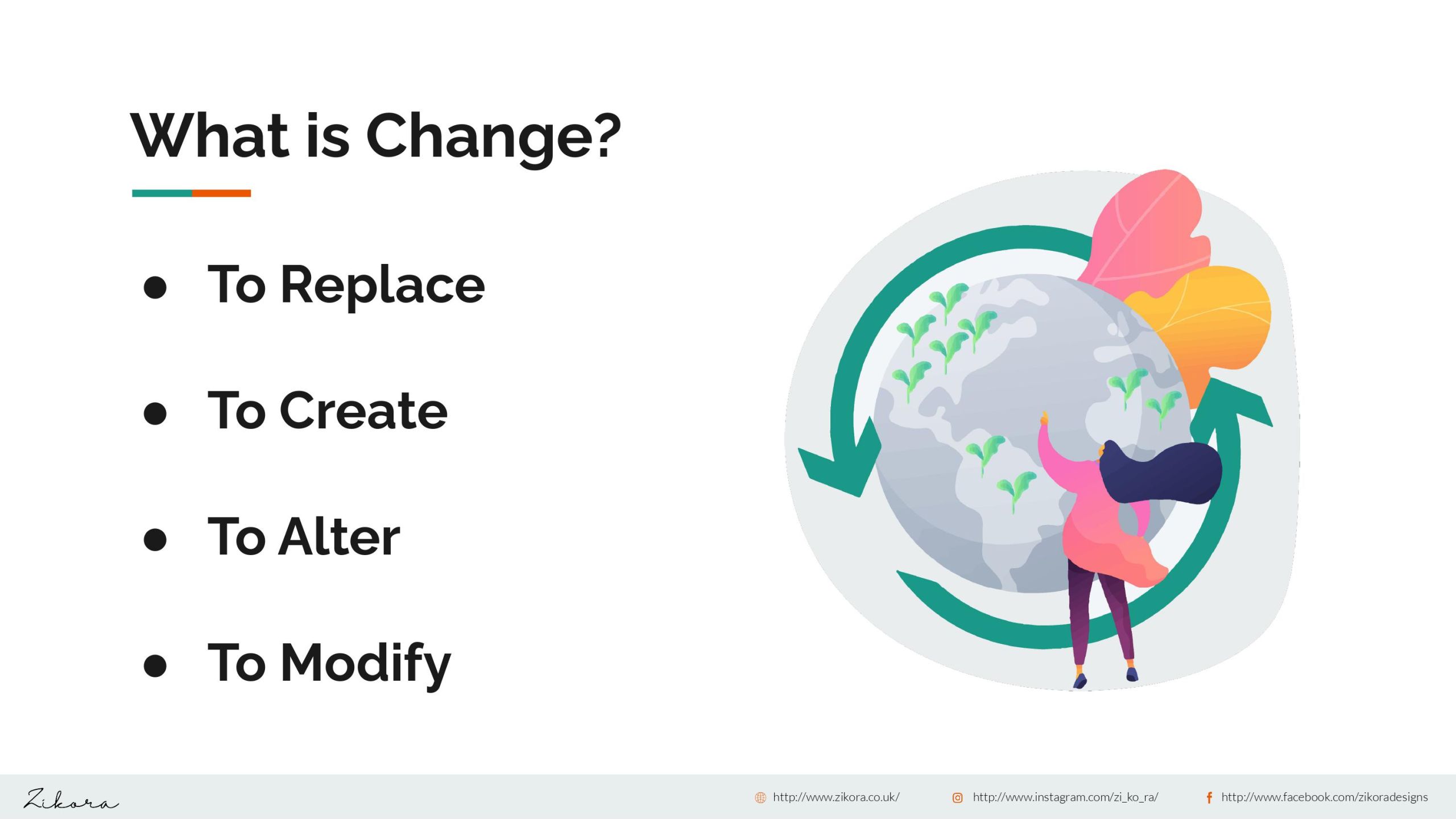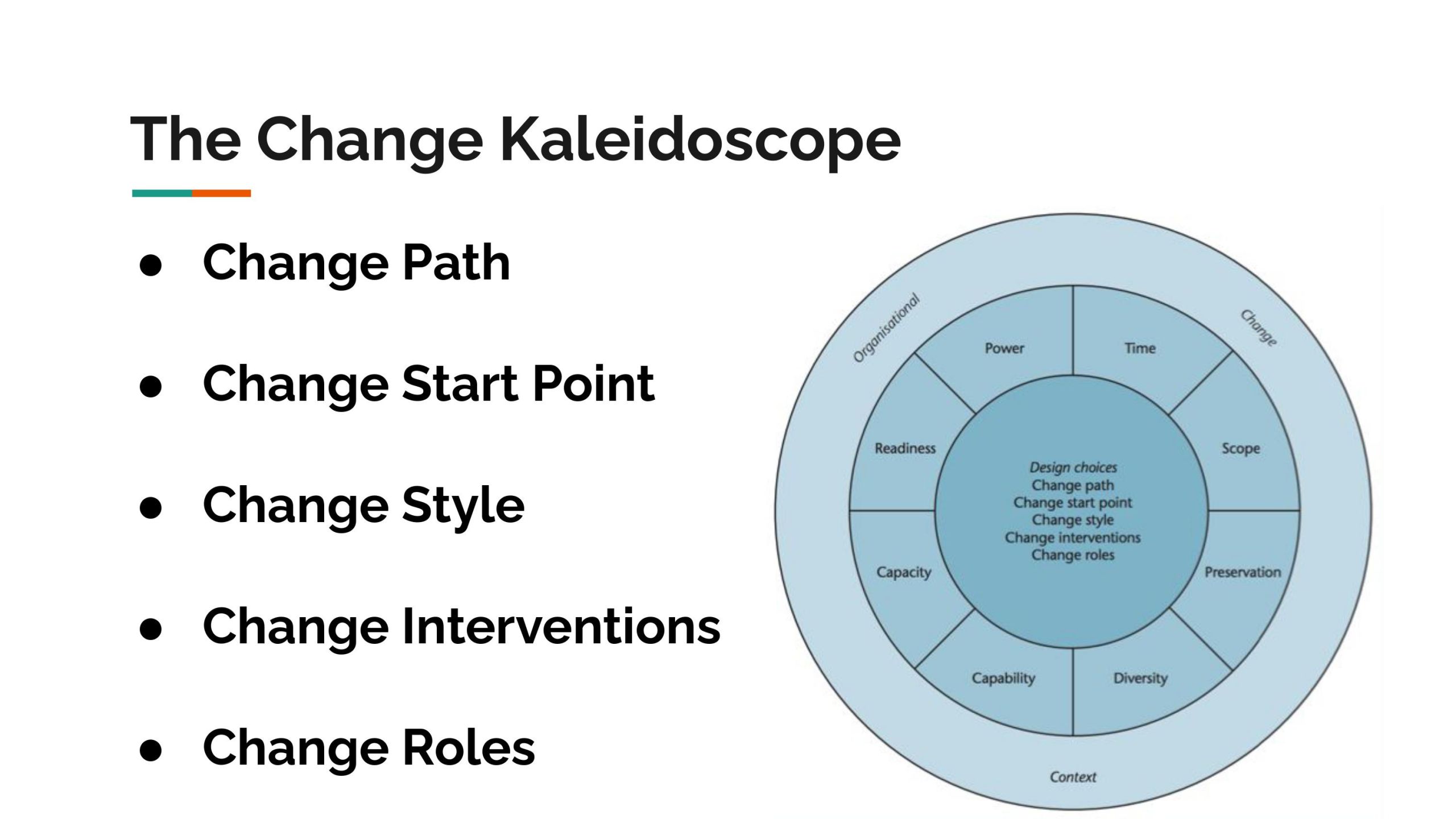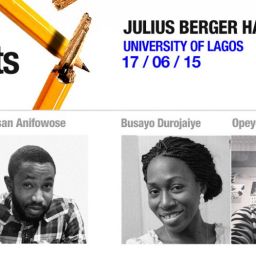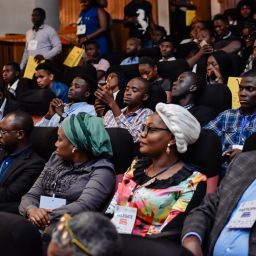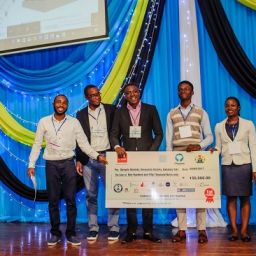
Onyinye Igbokwe is a project management professional with a background in Electrical Electronics Engineering and Project Management. Her core experience is in operations management, as well as product engineering and management.
She holds a B.ENG degree in Electrical/Electronic Engineering (Nigeria), an MSC in Construction Project Management (UK), and an Advanced Project Management Certificate (USA). She is currently the Founder and Operations Lead for Ujali Ltd. (a UK-based Tech Startup) and the Founding Partner at Zikora Designs LLP (a contemporary Design Studio based in the UK).
She discusses change management as a strategic approach to organizational dynamics, exploring Balogun and Hailey’s change kaleidoscope. Click on the video below to watch her presentation.
What is change?
Change is a regular encounter in project management. To change something is to replace, recreate, alter, or modify it. The world is constantly evolving to accommodate the dynamics of human nature. Human beings are in a constant state of change, which can be classified by the level of growth or regression they experience.
To change means altering the affairs of something to make it better; to recreate or redesign. The organization as an entity comprises human resources and is always looking to improve itself. Organizational change entails, but is not limited to change in culture and strategy, change of stakeholders, organizational restructuring, or a move to attain competitive advantage.
A change or change order (when managing construction work) is a bilateral agreement between parties to the contract — e.g., the owner & signed contractor, the signed contractor & subcontractor, etc.
Why manage change?
Cost, time, and quality—these are major parameters for measuring the success of a project. For a project to be successful, it has to be delivered within budget, on schedule and the confines of quality.
When quality changes are applied correctly, it helps to reduce waste and cost. Effective change management helps an organization make smart choices. It increases productivity and decreases loss. It helps to improve the profitability of an organization.
Change management practices across any organization can be more effective when there is a standard approach in place. It creates consistency and efficiency in managing projects.
Effective organizational change management allows the company to maintain a constant state of evolution and facilitate periods of general business change.
We manage change to allow workers to stay motivated and be productive during the production of new tech or procedures.
The Evolution of the Global Construction Industry
For hundreds of years, the construction industry was largely unchanged, but in the past two decades, the industry has seen more rapid changes than in any period in history, including the industrial revolution and post-war era.
From digital records and 3D images to smart construction software, drone technology, etc, the construction site isn’t quite the same as it was when all we did was put on our safety belts and get to work.
A focus on construction in Nigeria
Despite the obvious wins we have recorded over the years, the Nigerian construction industry still struggles with the following issues:
- Cost and time overruns result in wastefulness.
- Sub-standard work and shoddy workmanship
- Project abandonment
- Client and contractor dissatisfaction
- Non-compliance and lack of enforcement of health & safety procedures.
Managing Change: The Change Kaleidoscope
The Change Kaleidoscope is a change management model. There are a lot of change management methodologies and principles to choose from, like the Kotter’s 8 Change Process, Kurt Lewin’s models, and so on. However, Balogun & Hailey’s 1999 change Kaleidoscope framework is quite fascinating and leaves room for flexibility for change managers. It is based on the idea that each organizational change concept is unique.
The outer frame helps to make decisions from the context of the change, while the inner core helps to determine what design choice to adopt. It is where we have the decision-making process and design choices, change style, etc.
The Inner Core
The change path determines the type of change. Is it transformational or realignment? Is it a big bang (sudden introduction) or will it be slowly implemented?
- The change starting point: here, you consider the initiation point of the change. Is it top-down or bottom-up?
- The change kaleidoscope is a framework that you will go through as a change or project manager. Once you have defined all concepts, it is easier to have a framework that you can use to manage your change.
- Change style: which management style should be adopted—collaborative, directive, or coercive? How do you intend to facilitate this change?
- Change interventions: Which mechanism should be used (cultural or educational)? What communication style will be used to implement the change intervention.
- Change roles: This involves assigning roles and responsibilities for enforcing the changes.
The outer core
This comprises the context of your change.
- Capability: how capable is the organization of managing change? Are the managers and employees qualified to go through the change?
- Capacity: Does the organization have the resources to manage the change? Do you have the people, money or time?
- Readiness: Is the workforce ready for the change? What is their level of awareness? Are they committed to implementing the change?
- Power: Who are the stakeholders? Does the workforce have the power to resist change? What is the intervention process if they resist?
- Time: How much time will it take? How much time do you have? Is it a long-term trajectory of development? Is there an expectation of short-term goals?
- Scope: What is the nature of the change? Is the required outcome a realignment or a transformation? Does the change affect the whole organization, or is it limited to a particular project?
- Preservation: What asset is essential to maintain continuity? Do these assets consist of invaluable resources?
- Diversity: Who will be affected? Are there any differences among the groups of employees?
Change Management in Practice
Sharing from her previous experience, she reveals how the failure to specify clear terms in a project contract led to a prolonged delivery date as the client kept making changes to the work.
“It took us about a year to completely design a 5-bedroom duplex. By the time we ended, we went back to where we started.”
In dealing with clients, make sure that your contract has provisions for changes to happen and states what happens when these changes become excessive.
“When it was time to deliver the electrical drawings, I was sure to include the following conditions: (1) You are allowed 2 changes. (2)Any other change incurs an additional N100,000. (3) Every change that has nothing to do with the quality of my work attracts N100,000. This time, the client stuck to making two changes, and we were able to proceed to the next stage. ”
Have we changed for the better?
Yes, we have because we are not where we once were. We can now talk about BIM and machine learning. We could not do this years ago. However, we still have a lot to do.
“Change has a considerable psychological impact on the human mind. To the fearful, it is threatening because it means that things may get worse. To the hopeful, it is encouraging because things may get better. To the confident, it is inspiring because the challenge exists to make things better.” –King Whitney Jr.


